Tom Stafford's Blog, page 49
August 4, 2013
A concise, solid grounding in neuroscience
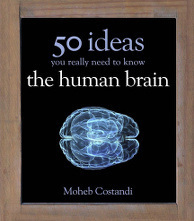 I often get asked ‘how can I avoid common misunderstandings in neuroscience’ which I always think is a bit of an odd question because the answer is ‘learn a lot about neuroscience’.
I often get asked ‘how can I avoid common misunderstandings in neuroscience’ which I always think is a bit of an odd question because the answer is ‘learn a lot about neuroscience’.
This is easier than it sounds, of course, but if you want a solid introduction, a book by Mo Costandi called 50 Human Brain Ideas You Really Need to Know is an excellent starting point.
If you recognise the name Mo Costandi its because he has been writing the brilliant Neurophilosophy blog for the best part of the last decade as he’s moved from being a neurobiologist to a science journalist.
The book consists of 50 four page chapters each of which condenses a key area of neuroscience in a remarkably lucid way.
There is no pandering to the feint of heart in the selected topics (from free will to neural stem cells) but neither is there a glossing over of conflicting evidence or controversy.
You won’t get poorly researched hype here about ‘mirror neurons’ being ‘responsible for empathy’ or brain scans showing how the brain ‘lights up’ but you will get a concise, balanced and entertaining introduction to key concepts in neuroscience.
It’s worth noting that the book does not hand-hold you. It’s not a complete beginners guide. It’s aimed at a ‘smart high-school kid and up’ level but if that’s you, and you want to get to grips with the brain, this book is ideal.
Link to more details on 50 Human Brain Ideas You Really Need to Know.


The curious relationship between truth and madness
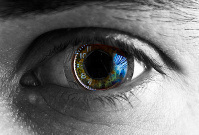 I’ve got an article in The Observer on the misunderstood relationship between truth and madness.
I’ve got an article in The Observer on the misunderstood relationship between truth and madness.
The definition of a ‘delusion’ has just been changed so it no longer has to be considered a ‘false belief’.
It turns out that this issue turns up regularly in world events, owing to the sad tendency for whistle-blowers to be ‘accused’ of being ‘mentally ill’ when others don’t like what they’re saying.
It’s not clear who forcibly sedated her in 1972. It’s not certain that she was admitted to a psychiatric ward in the following year. What’s definite though is that many people thought she was mad as she ranted about conspiracies in the White House during eccentric phone calls to the press. Questions about Martha Beall Mitchell’s sanity were encouraged by the Nixon administration, who consistently briefed against her and probably had her medicated against her will. But ultimately her claims were proven correct when the Watergate scandal broke.
It’s worth bearing in mind that we’re not talking about the everyday use of the term ‘delusion’ (typically meaning mistaken) but the psychiatric definition which describes intensely held beliefs that are impervious to reality.
They are fascinating in many ways but, as the article discusses, they do not necessarily mean that the person is wrong.
Link to Observer article on truth and delusion.


August 3, 2013
Shuffle Festival
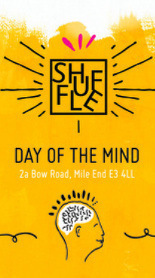 A festival of music, film and neuroscience is about to kick off in an abandoned psychiatric hospital in East London. Called Shuffle Festival, it runs from the 8th – 18th August.
A festival of music, film and neuroscience is about to kick off in an abandoned psychiatric hospital in East London. Called Shuffle Festival, it runs from the 8th – 18th August.
It is happening in the old St Clement’s Hospital on Mile End Road and is being curated by Oscar winning film director Danny Boyle.
If you check the programme, August 11th is the ‘Day of the Mind’ where during the day you can enter for free and experience a host of neuroscience events, stalls and experiments.
Later in the evening there is an event with Ruby Wax, following by an extract of Luke Fowler’s R.D Laing documentary All Divided Selves.
After I’ll be taking part in a discussion about the legacy of R.D. Laing, neuroscience and mental health and later in the evening there’s the inevitable showing of One Flew Over the Cuckoo’s Nest.
The story of how I got involved in the event is a little curious. One Saturday, I decide to walk from Kingsley Hall, the location of R.D. Laing chaotic 60s experiment in mental health care, to Liverpool Street Station, the location of the original ‘Bedlam’ hospitals.
As I was passing St Clement’s Hospital I noticed some folks on the inside, shouted until I get their attention and asked if they could let me in. It turns out it was the organiser and friends scoping the place out.
I got to take some great photos, gave them my email address and despite starting the day by yelling excitedly at them, they’ve asked me to speak.
By the way, I’ve had a morbid interest in charting how some of London’s biggest Victoria asylums have been converted into luxury apartments but after the festival St Clement’s is going to be turned into affordable housing for East London which makes a nice change.
If you’re interested in the Shuffle Festival, a lot of the events are selling out quickly so grab tickets while you can.
Link to Shuffle Festival.


A notorious song
 A song banned was banned by the BBC until 2002 because worries that it may cause a suicide epidemic. The piece is titled Gloomy Sunday and was written by the Hungarian composer Rezső Seress.
A song banned was banned by the BBC until 2002 because worries that it may cause a suicide epidemic. The piece is titled Gloomy Sunday and was written by the Hungarian composer Rezső Seress.
The following abstract tip-toes around the point that there is no evidence it ever caused suicides but the history and hand-wringing about the song are interesting in themselves.
Gloomy Sunday: did the “Hungarian suicide song” really create a suicide epidemic?
Omega (Westport). 2007-2008;56(4):349-58.
Stack S, Krysinska K, Lester D.
The effect of art on suicide risk has been a neglected topic in suicidology. The present article focuses on what is probably the best known song concerning suicide, Gloomy Sunday, the “Hungarian suicide song.” An analysis of historical sources suggests that the song was believed to trigger suicides. It was, for example, banned by the BBC in England until 2002. The alleged increase in suicides in the 1930s associated with the playing of the song may be attributed to audience mood, especially the presence of a large number of depressed persons as a result of the Great Depression.
The influence of music on suicide may be contingent on societal, social, and individual conditions, such as economic recessions, membership in musical subcultures, and psychiatric disturbance. Further research is needed on art forms, such as feature films, paintings, novels, and music that portray suicides in order to identify the conditions under which the triggering of suicides occurs.
There are lots of versions of the song, including the original, available on YouTube. As you might expect, the best is a version by Billie Holliday.
It is indeed kinda gloomy, but it’s hardly like to spark a wave of suicidal thinking.
There is, however, a minor history concerning how works of art affect real-world suicide practices.
Most famously, the Aokigahara forest in Japan at the base of Mount Fuji has become a common suicide destination after the characters in Seichō Matsumoto’s 1961 novel Kuroi Jukai end their lives there.
Link to abstract of article about ‘Gloomy Sunday’ on PubMed.


July 31, 2013
Love is a cognitive enhancer
 Aeon magazine has an excellent article about how a study on the adoption of Romanian orphans has helped us understand the importance of early-life affection for brain development.
Aeon magazine has an excellent article about how a study on the adoption of Romanian orphans has helped us understand the importance of early-life affection for brain development.
It tracks the story of the Bucharest Early Intervention Project (BEIP), a US-based study that was inspired by seeing the appalling living conditions of orphans from the Ceausescu regime era.
Many were left with virtually no human interaction, were often poorly fed, in poor health and sometimes seemed to be cognitively impaired.
The Bucharest Early Intervention Project completed a randomised controlled trial to show that adoption not only improved physical health but also improved brain function – demonstrating the importance of human contact for healthy brain development.
It’s a moving article that really gets into the importance of early development but it gives an curious impression of what inspired the studies.
It suggests that in 1999, when the study was first launched, previous studies on the negative neurodevelopmental effects of depriving young animals of maternal affection provided the basis for thinking that this is what might be happening in the Romanian orphans.
This is certainly one line of thinking. The experiments of serial monkey abuser Harry Harlow often pop up in these discussions, despite the fact that the effect of early care and affection on healthy emotional development has been known since antiquity and was demonstrated by John Bowlby’s studies on World War II evacuee children years before.
But in the case of Romanian orphans, one of the most important sources of information was not animal studies, but studies already done on the effects of adoption on brain development in Romanian Orphans – of which the first study was published a year earlier, in 1998.
These studies were led by child psychiatrist Michael Rutter who had revisited Bowlby’s ideas and thought that while broadly accurate they were probably too strong in their predictions and that development could be improved for many.
When the Ceausescu regime fell and the plight of the orphanages became clear, many families from across Europe adopted orphans. Rutter compared children who had been taken up by UK families and compared them on what age they were adopted.
The studies found that the length of emotional deprivation was associated with smaller head size (reflecting brain development), lowered IQ, and increased mental heath problems, even when the effects of poor nutrition were controlled for.
One of the difficulties is that the results may not have been comparable to the effects of adoption by Romanian families – which, for example, remains a country with a more limited healthcare system.
The Bucharest Early Intervention Project were the first to run a randomised controlled trial of adoption – literally, an experiment to compare adopting children versus institutional care – to conclusively demonstrate the benefits.
Needless to say, it was an ethically charged project, and the Aeon article discusses the challenges that it raised.
Link to Aeon article ‘Detachment’.


July 24, 2013
A literary review of the DSM-5
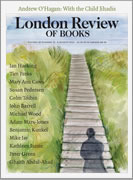 Philosopher Ian Hacking, famous for analysing the effects of psychological and neuroscientific knowledge on how we understand ourselves, has reviewed the DSM-5 for the London Review of Books.
Philosopher Ian Hacking, famous for analysing the effects of psychological and neuroscientific knowledge on how we understand ourselves, has reviewed the DSM-5 for the London Review of Books.
It’s both an excellent look at what the whole DSM project has been designed to do and a cutting take on the checklist approach to diagnosis.
It’s not often that a review gives you a feeling of both a wholesome read and a guilty pleasure, but Hacking does both with this piece.
The DSM is not a representation of the nature or reality of the varieties of mental illness, and this is a far more radical criticism of it than [NIMH Director Thomas] Insel’s claim that the book lacks ‘validity’.
I am saying it is founded on a wrong appreciation of the nature of things. It remains a very useful book for other purposes. It is essential to have something like this for the bureaucratic needs of paying for treatment and assessing prevalence.
But for those purposes the changes effected from DSM-IV to DSM-5 were not worth the prodigious labour, committee meetings, fierce and sometimes acrimonious debate involved. I have no idea how much the revision cost, but it is not that much help to clinicians, and the changes do not matter much to the bureaucracies.
And trying to get it right, in revision after revision, perpetuates the long-standing idea that, in our present state of knowledge, the recognised varieties of mental illness should neatly sort themselves into tidy blocks, in the way that plants and animals do.
The old joke about a dictionary review goes “the plot wasn’t up to much but at least it explained everything as it went along”.
For the DSM it might well be “the plot wasn’t up to much and neither did it explain everything as it went along”.
Link to ‘Lost in the Forest’ in The LRB (via @HuwTube)


July 22, 2013
What makes an extravert?
Why do some people prefer adventure and the company of others, while others favour being alone? It’s all to do with how the brain processes rewards.
Will you spend Saturday night in a crowded bar, or curled up with a good book? Is your ideal holiday adventure sports with a large group of mates and, or anywhere more sedate destination with a few good friends? Maybe your answers to these questions are clear – you’d love one option and hate another – or maybe you find yourself somewhere between the two extremes. Whatever your answers, the origin of your feelings may lie in how your brain responds to rewards.
We all exist somewhere on the spectrum between extroverts and introverts, and different circumstances can make us feel more one way or the other. Extraverts, a term popularised by psychologist Carl Jung at the beginning of the 20th Century, seem to dominate our world, either because they really are more common, or because they just make most of the noise. (The original spelling of “extravert” is now rarely used generally, but is still used in psychology.) This is so much the case that some have even written guides on how to care for introverts, and nurture their special talents.
A fundamental question remains – what makes an extrovert? Why are we all different in this respect, and what do extraverts have in common that makes them like they are? Now, with brain scans that can record activity from deep within the brain, and with genetic profiling that reveals the code behind the constructions of the chemical signalling system used by the brain, we can put some answers to these decades-old questions.
In the 1960s, psychologist Hans Eysenck made the influential proposal that extroverts were defined by having a chronically lower level of arousal. Arousal, in the physiological sense, is the extent to which our bodies and minds are alert and ready to respond to stimulation. This varies for us all throughout the day (for example, as I move from asleep to awake, usually via few cups of coffee) and in different circumstances (for example, cycling through the rush-hour keeps you on your toes, heightening arousal, whereas a particularly warm lecture theatre tends to lower your arousal). Eysenck’s theory was that extroverts have just a slightly lower basic rate of arousal. The effect is that they need to work a little harder to get themselves up to the level others find normal and pleasant without doing anything. Hence the need for company, seeking out novel experiences and risks. Conversely, highly introverted individuals find themselves overstimulated by things others might find merely pleasantly exciting or engaging. Hence they seek out quiet conversations about important topics, solitary pursuits and predictable environments.
Betting brains
More recently, this theory has been refined, linking extroversion to the function of dopamine, a chemical that plays an intimate role in the brain circuits which control reward, learning and responses to novelty. Could extroverts differ in how active their dopamine systems are? This would provide a neat explanation for the kinds of behaviours extroverts display, while connecting it to an aspect of brain function that we know quite a lot about for other reasons.
Researchers lead by Michael Cohen, now of the University of Amsterdam, were able to test these ideas in a paper published in 2005. They asked participants to perform a gambling task while in the brain scanner. Before they went in the scanner each participant filled out a personality profile and contributed a mouth swab for genetic analysis. Analysis of the imaging data showed how the brain activity differed between extroverted volunteers and introverted ones. When the gambles they took paid off, the more extroverted group showed a stronger response in two crucial brain regions: the amygdala and the nucleus accumbens. The amygdala is known for processing emotional stimuli, and the nucleus accumbens is a key part of the brain’s reward circuitry and part of the dopamine system. The results confirm the theory – extroverts process surprising rewards differently.
When Cohen’s group looked at the genetic profiles of the participants, they found another difference in reward-related brain activity. Those volunteers who had a gene known to increase the responsiveness of the dopamine system also showed increased activity when they won a gamble.
So here we see part of the puzzle of why we’re all different in this way. Extrovert’s brains respond more strongly when gambles pay off. Obviously they are going to enjoy adventure sports more, or social adventures like meeting new people more. Part of this difference is genetic, resulting from the way our genes shape and develop our brains. Other results confirm that dopamine function is key to this – so, for example, genes that control dopamine function predict personality differences in how much people enjoy the unfamiliar and actively seek out novelty. Other results show how extroverts learn differently, in keeping with a heighted sensitivity to rewards due to their reactive dopamine systems.
Our preferences are shaped by the way our brains respond to the world. Maybe this little bit of biological psychology can help us all, whether introverts or extroverts, by allowing us to appreciate how and why others might like different things from us.
This is my BBC Future column from last week. The original is here


July 21, 2013
The Mystery of The Cuckoo’s Calling
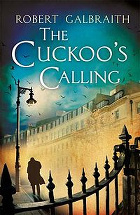 One of the computational linguists who applied forensic text analysis to JK Rowling’s books to uncover her as the author of The Cuckoo’s Calling describes the science behind his investigation in a post for Language Log.
One of the computational linguists who applied forensic text analysis to JK Rowling’s books to uncover her as the author of The Cuckoo’s Calling describes the science behind his investigation in a post for Language Log.
It seems Rowling’s authorship was originally leaked by her law firm and a UK newspaper turned to two academics who specialise forensic text analysis to back up their suspicions.
On of those academics, computer scientist Patrick Juola, wrote a piece for Language Log to describe how this sort of text analysis works.
Of the 11 sections of Cuckoo, six were closest (in distribution of word lengths) to Rowling, five to James. No one else got a mention.
Another feature I used were the 100 most common words. What percentage of the document were “the,” what were “of,” and so on. Again, a rich data set that is easy to extract by computer. Using an otherwise similar analysis (including cosine distance again), four of the sections were Rowling-like, four were McDermid-like, and the other three split between James and Rendell.
I ran two tests based on authorial vocabulary. The first was on the distribution of character 4-grams, groups of four adjacent characters. These could be words, parts of words (like four letters “nsid” that would be inside the word “inside”) or even parts of two words (like the four letters “n th” as part of the phrase “in the”)… I also ran on word bigrams, pairs of adjacent words, again a feature with a good track record.
The character 4-grams showed a preference for McDermid, with 8 sections close to her. Three were Rowling-like, and no one else was mentioned. The word pairs, on the other hand, were clearly Rowling-like (9 sections, against 2 by McDermid, no one else mentioned).
If you want to play around with some of the technology behind both Juola’s authorship attribution work, or that of Peter Millican – the other academic contacted by the press to do an analysis – you can actually download them both from the net.
Juola’s JGAAP programme is available here while you can get Millican’s at this page.
Rumours that Mind Hacks is actually written by Natalie Portman will be strictly denied.
Link to Juola’s post on Language Log.


July 20, 2013
A proto-anthropology of the rock n’ roll groupie scene
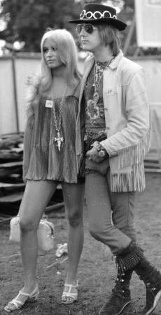 The Groupies is a remarkable record. The 1969 LP features nothing but interviews with ‘super groupies’ who discuss the culture of sleeping around the 60′s rock n’ roll scene.
The Groupies is a remarkable record. The 1969 LP features nothing but interviews with ‘super groupies’ who discuss the culture of sleeping around the 60′s rock n’ roll scene.
It was made by, and featured, an 18 year-old version of the future Dr Cleo Odzer who shows her early interest in both sex and culture – both of which she’d study in her career as an anthropologist.
The girls talk about taking drugs, hanging out with bands, getting the clap and ‘making piggies’ – which is quite possibly both the cutest and oddest euphemism I’ve ever heard for having sex.
By the time she made The Groupies she had already been featured in Time magazine and broken off an engagement to Keith Emerson – of Emerson, Lake & Palmer fame. That’s them together on the left, by the way.
Odzer went on to become a journalist, then a drug runner, then an addict, then an ex-addict, and then, an anthropologist – eventually completing her PhD in the subject at the New School for Social Research in New York by studying prostitution in Thailand.
This was the first of Odzer’s areas of interest as an anthropologist. The second was the hippy scene in Goa, India, and the third was on sexual activity on the internet – then rather boldly called ‘cybersex’.
It’s worth saying that Odzer was never the most objective of investigators, tending to get overly involved in most things she researched. Or at least, that’s how it seemed. It’s just as possible she decided to research the things that she was already overly-involved with.
You can see this in her work. While her academic work included a more cutting analysis, her published books tended to be as much about her as the culture.
Her 1997 ‘cybersex’ book Virtual Spaces: Sex and the Cyber Citizen was largely thought a curiosity but, looking back, it was quite revolutionary.
While the academic world had just discovered this weird new phenomenon, and mostly viewed it with eyes-over-spectacles disproving glances, Odzer wrote what amounted to a cross between a Lonely Planet travel guide and the Joy of Sex – but for the newly connected internet user.
Odzer died at the age of 50, in Goa, after returning there from New York. Accounts vary. Possibly she died peacefully in her adopted home, possibly she finally succumbed to a lonely death with AIDS.
But when you listen to The Groupies LP, and the full audio is online, you can see the beginnings of a common thread that ran through her work.
It touches on a genuinely interesting social area which most people would have dismissed as seedy but which has a clear culture emerging from it. The analysis is slightly chaotic but genuinely insightful in places. It captures the excitement but in retrospect, it took something from her.
Link to page with audio of The Groupies.
Link Wikipedia page on Cleo Odzer.


July 18, 2013
Candidate neurotech for the billion dollar brain projects
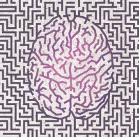 Nature has an article that discusses candidate neuro-mapping technologies that may form the basis of the billion dollar brain projects that are just kicking off on either side of the Atlantic.
Nature has an article that discusses candidate neuro-mapping technologies that may form the basis of the billion dollar brain projects that are just kicking off on either side of the Atlantic.
Both Europe’s and Obama’s brain projects have set themselves the (possibly over-) ambitious goal of mapping the working brain on the neuron-by-neuron level.
This is off the back of new technologies that promise multiple-neuron fine-grained recording and systems to make sense of the date – but can only currently do it on a very small scale.
The Nature article looks at the most promising options and how they might scale to whole brain, or at least, ‘big chunk of brain’ level.
Attempting to take another leap farther, Jeff Lichtman at Harvard University in Cambridge, Massachusetts, and Winfried Denk of the Max Plank Institute for Neurobiology in Munich, Germany, are working with the German optics company Carl Zeiss on a new electron microscope that would image even thinner slices — 25 nanometres, or one-thousandth the thickness of an average cell. “Then you get to see every little damn thing in the brain, from every neuron to every subcellular organelle, from every synapse to every spine neck — everything,” says Lichtman.
It’s probably worth saying that the ‘mapping the whole brain as it’s working’ thing is spin. Considering there are about 100 billion or so neurons in the human brain that’s a lot of microchips you’d need mixing in with your brain.
Link to Nature article ‘Neuroscience: Solving the brain’


Tom Stafford's Blog
- Tom Stafford's profile
- 13 followers



